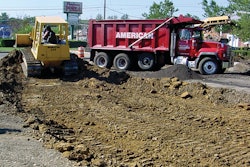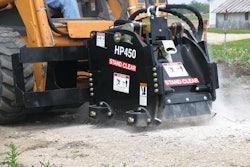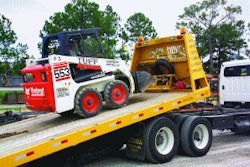Here we are again — another year end approaching where we figure out if we made a buck or not. How do you think you did? I really shouldn’t have to ask that question, because you should have known the answer somewhat in September.
Basically, what I’m seeing is those lucky enough to be in the energy fields are doing okay. I will call them the Category 1 group. Then there is the Category 2 group, which should be doing better than last year (though not much).
Before we go much further, let’s review the statements made by USG, Stock Building Supply, BlueLinx and Gibraltar — all public building supply companies — as part of their required quarterly reports to shareholders. All in all, the companies declared, “Construction market demand has strengthened!” Some of these companies reported double-digit growth for the third quarter. Looking forward, residential, remodeling and commercial building product demand is expected to improve in 2014.
Whether this will carry over to the construction industry, and how much, probably depends on which category you fall into — No. 1 or No. 2. If we have to take one side or the other, I would have to say both categories will experience growth in 2014, assuming the economy continues its current growth rate.
Study Outlines Growth Strategies and Risks
Related to this growth scenario is the associated risks business owners and management have to anticipate and control as part of their decision to expand their business. The November 18 issue of Forbes contains an ad by Zurich, which includes a link to an extensive study collaborated with Forbes on how growth strategies are aligned with risk management. I found it quite interesting and suggest that you get your hands on a copy and read it.
The construction industry was one four industries covered in the Forbes/Zurich report. The others were banking, healthcare and real estate. When you consider the mix of the industries covered, they are related to some extent. A total of 400 industry executives were interviewed for the report, which means we have a meaningful sample.
The construction execs ranked Operational, Strategic and Financial risks as deserving the most attention. These same execs noted that the impediments to additional employment in the construction industry are:
- the U.S. economy;
- energy prices;
- backlog;
- and healthcare costs.
Along the same lines, changes in the following could add to head count:
- the U.S. economy;
- increased backlog;
- and more government work.
Comments about where the construction markets are headed were geared to energy, re-shoring and new initiatives resulting from the expansion of the Panama Canal, all of which cover our Categories 1 and 2. Weak markets still mostly relate to public work.
What was really interesting is how the execs graded their companies in terms of risk assessment and management of those risks. They gave themselves pretty high grades. But a later assessment showed that management did have a hard time understanding the source of risk and how to mitigate it.
The bottom line here is if you plan to expand your business, whether you fall into Category 1 or 2, you have to assess the future risks you expect to face. This could include risks that have changed in importance or new risks you will be facing because of a changing economy, interest rate changes, inflation, deflation, and whatever you care to add to the list.
How Your “Category” Influences Your Growth Strategy
The Forbes/Zurich report includes a section summarizing growth strategies contractors plan to use to increase business. These include:
- expanding their markets on their own or with joint ventures of some sort;
- creating new marketing plans to attract new business or to stay in contact with existing customers;
- upgrading personnel to operate more efficiently or to increase product offerings.
To put this into perspective, let’s review how those in Category 1 would use this approach for planning in 2014. Let’s assume someone in this category has few pricing issues and can withstand any cost increases they incur. This is not a bad spot to be in.
But this type of entity could also be prone to taking excessive financial risk because they feel they have the ability to withstand any challenge that comes up. That would be a mistake, especially if their growth strategy calls for taking on debt loads they couldn’t handle if the markets reverse. They could also have a staffing problem that makes them unable to perform properly and profitably without the right type and number of employees. So even Category 1 contractors have a need (maybe more so) to assess the risks they face; recognize them when they appear; and have the knowledge and plan to deal with them as necessary.
Category 2 contractors have different issues to deal with. They are in a tough environment where pricing is an issue. In addition, their expenses are sure to increase every year, meaning they have to either increase sales revenues or reduce expenses to generate the same profit level they did the previous year just to stay even. This is a little different from our Category 1 folks.
Yet, when you consider all of the factors, Category 2 companies have similar issues. They believe business will improve and they need to make some changes to get new business and ensure the resources are available to do the work. Category 2 companies, however, have less leeway to work with and must take the time required to understand the risks they are dealing with before taking on new obligations. In short, careful aim is required before pulling the trigger.
In both cases, there is risk associated with growth. So let’s keep in mind it’s not the top line that governs but how much cash you generate. Remember, more sales may not add more value.



















